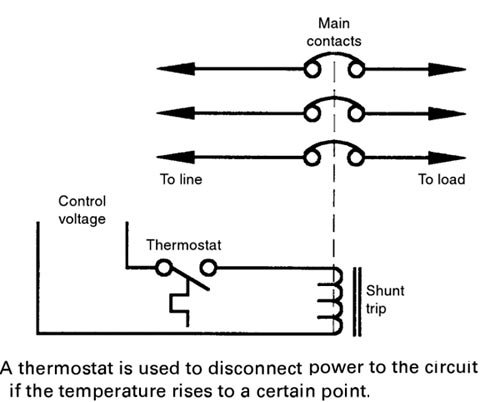D.C shunt relays are made of
Right Answer is:
Many turns of thin wire
SOLUTION
Shunt Trips
Shunt relays are the auxiliary device used in conjunction with a circuit breaker which is similar to shunt contractors, except that they are required to handle only small amounts of current, since they commutate the coils of other relays and contractors, and do not handle the motor current. Therefore they are made of thin wire of many turns.
Some circuit breakers contain a small solenoid coil known as a shunt trip. Shunt trips are used to open the circuit breaker contacts by energizing the solenoid from an external source.
Assume, for example, that it is desirable to disconnect the power to a circuit if the temperature rises above a certain level. If the circuit breaker protecting the circuit contains a shunt trip, a thermostat can be connected in series with the solenoid. If the temperature rises above the desired level, the thermostat contacts will close and energize the coil, Figure. When the coil energizes, the circuit-breaker contacts will open and disconnect power to the circuit.

A shunt trip relay completes the circuit between the control-power source and the solenoid coil. Shunt trips are used to trip a circuit breaker electrically from a remote location and consist of a momentary-rated solenoid tripping device mounted inside a molded case. The shunt trip can remotely trip the breaker but cannot remotely reclose the breaker. To recluse the breaker, the breaker handle must first be moved to the reset position and then to the “on” position.
